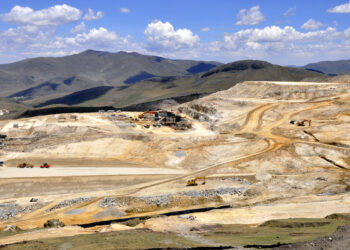In June, investment research firm Zacks dubbed the future of silver “dismal”, ranking the strength of the metal’s market in the lowest quarter of 256 commodities profiled, ultimately placing silver 192nd on the leader board. The group claims that the top half of its ranked industries perform, on average, more than 50% better than the bottom half, and silver’s poor performance has led to a collapse in the industry’s profits, with Zacks reporting that the sector’s earnings for the year to date are 54% lower than in the first seven months of 2018.
From international tensions such as the escalating US-China trade war, to imbalances between supply and demand, silver is losing both its lustre and its stability, raising concerns amongst investors and miners alike that investing in the metal, traditionally considered a “safe haven asset” by Zacks, may no longer be such a profitable project.
Rising production costs and falling prices
The decline in the value of silver has been largely influenced by increases in the cost of silver production, with the Americas Silver Corporation (ASC) reporting at the end of 2018 that the price of producing the metal had increased from $20.30 per ounce of silver in 2017 to $23.35 per ounce of silver a year later, an increase of 16%.
This increase has been driven by the fact that silver is often produced as a by-product of other mining operations, rather than purposefully explored for and extracted. The world’s largest silver mine by production, Fresnillo’s Saucito mine in Mexico, saw production of both zinc and lead dramatically outpace silver production in 2018, with the mine producing 29,506 tonnes, 22,662 tonnes and 19,781 kilo ounces of each commodity respectively.
Polymetallic operations also face the need to effectively sort the mined ore, with a number of companies, including Tomra and Steinert, offering innovative solutions to sort ore, taking advantage of x-ray technology and automation. However, Goldcorp’s 2016 annual report found that “high carbon ore cannot be separated” at its flagship Peñasquito mine in Mexico, the world’s largest silver mine by reserve, highlighting deficiencies in the technological methods used to extract and process silver ore, further reducing the efficiency of the silver-mining industry.
This lack of specialised solutions resulted in declining production across the silver sector between 2017 and 2018, with total silver produced falling 15%, and total volume of ore processed falling 14%, according to the ASC. The group also reported increases of 7% and 13% in the cost of sales and total cash costs, per silver ounce, reflecting increases in prices across numerous stages of the silver supply chain, all cutting into the bottom line.
These issues have been compounded by falling demand, with the Silver Institute reporting in 2018 that global demand for the metal fell by 3% compared to the previous year, despite a 0.3% increase in global silver supply. This combination of inefficient production and a supply surplus has underpinned a significant decline in the per-ounce cost of silver, which has fallen consistently from $55.35 in April 2011, according to Macro Trends, to just $15 in April 2019.
These figures are both considerably lower than the all-time high of $117.69 in January 2018, and reflects the long-term consequences of an industry that has struggled to establish its own supply chains not tied to the production of other commodities, such as gold.
Improvements to production and increased demand
However, industry players remain optimistic that the fortunes of silver could change, influenced by an increase in demand for the metal. The Silver Institute predicts that in 2019, industrial demand for silver, which is responsible for 60% of total demand of the metal, will “rise modestly” across industrial operations.
The group has also pointed to the growing demand for solar panels as the world moves towards a greater reliance on renewable energy as an influential factor over the performance of silver due to the metal’s usage in solar photovoltaic cells. Researchers from the University of Kent found the metal to have the best electrical and thermal conductivity, making it an ideal component in solar cells, with around 20g of silver required to build a panel. The Silver Institute reporting that the world will construct 100GW of new solar facilities per year between 2018 and 2022, which would more than double the world’s solar capacity from the 398GW in 2017, so there is significant potential for demand for silver to recover.
Improvements in production methods could also benefit the sector in the long-term, with Goldcorp aiming to address its technological weaknesses at Peñasquito. The miner has completed test work on a “concentrate enhancement project”, which will make the separation of ore easier and enable the company to increase profits by reducing the strain on sorting machines, and increase total production of processed metals.
Mexico-based First Majestic is also committing to new technological innovations at its projects. The firm, which was the world’s 20th-largest silver miner in terms of both production and value in 2016, was ranked as the second-most favourable investment by Zacks on 22 July this year, and has announced the hiring of a vice president of information technology to streamline digital services, and unveiled what it calls a new “fine grinding technology” at its Santa Elena mine.
While the company’s total volume of ore processed fell by 13% between the second quarter of 2018 and the second quarter of 2019, total production, silver ounces produced and gold ounces produced all increased by figures of 25%, 16% and 32% over this period, demonstrating that improvements in the efficiency of production can ensure a company’s profitability, despite a struggling market and depleted reserves.













